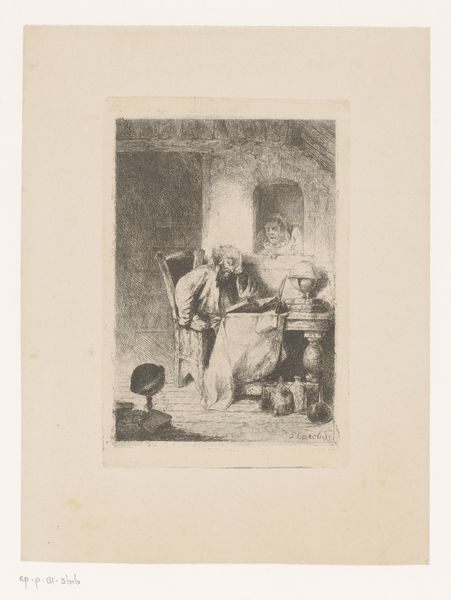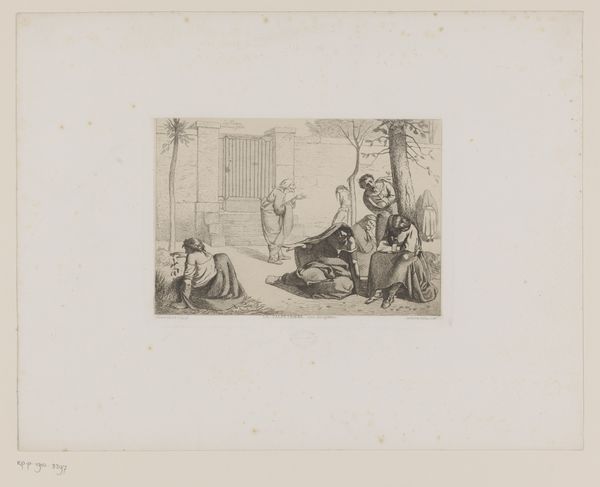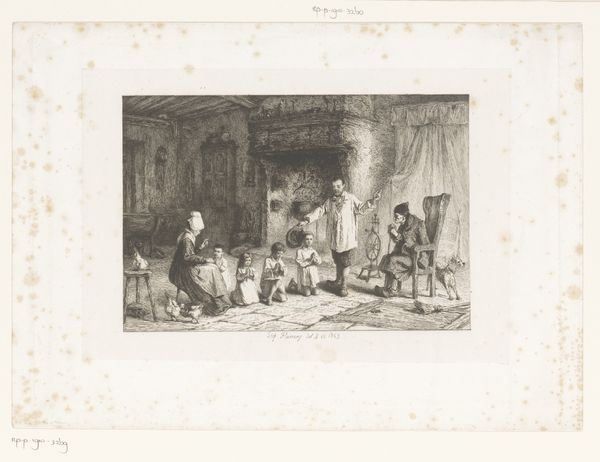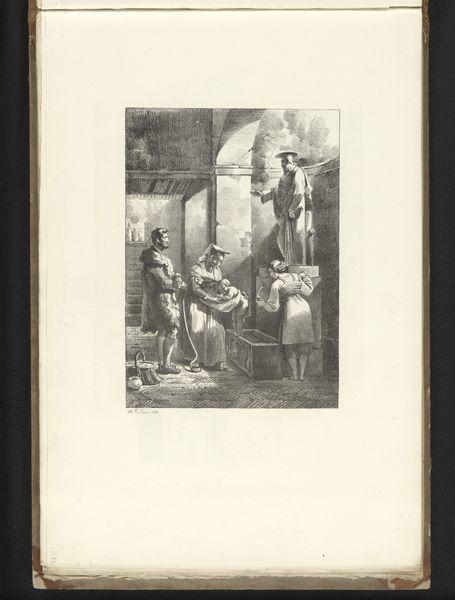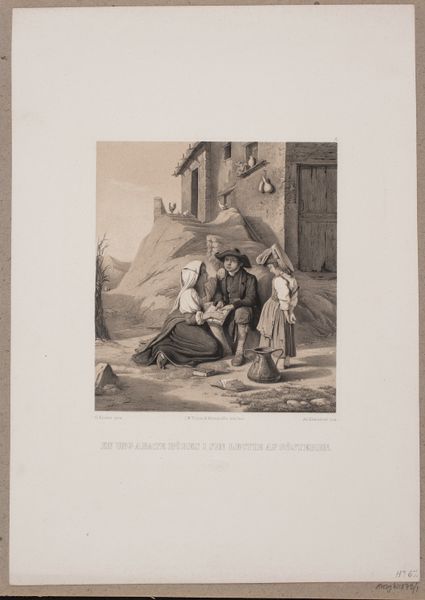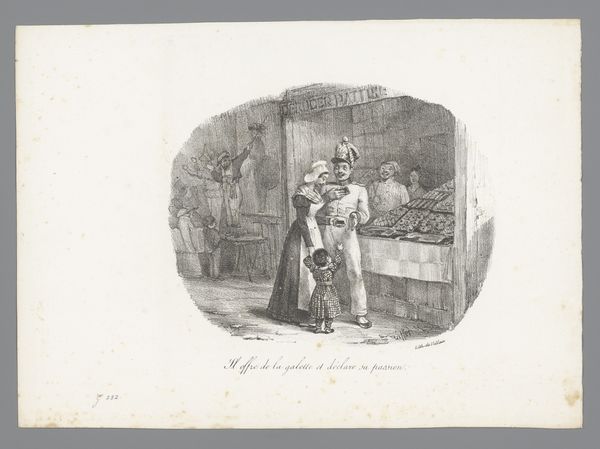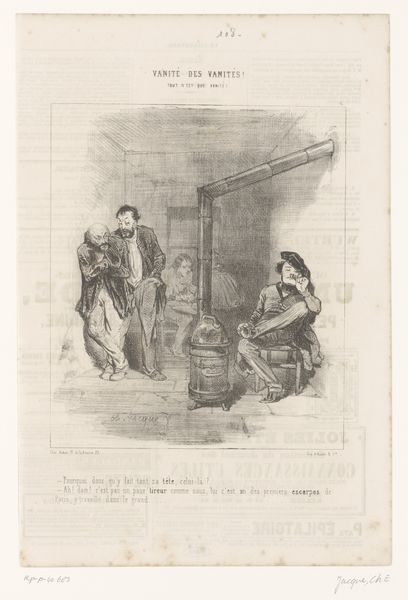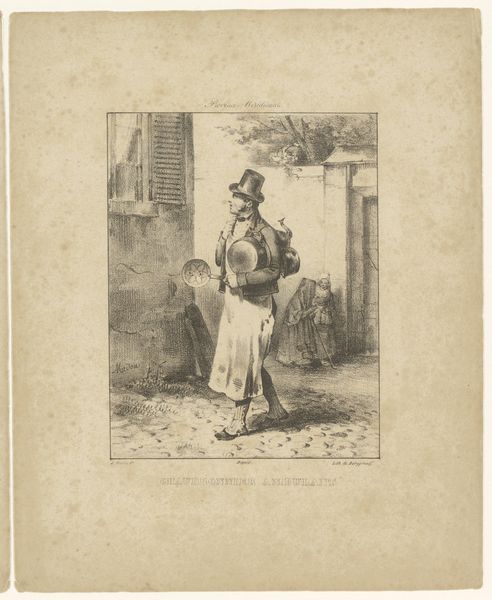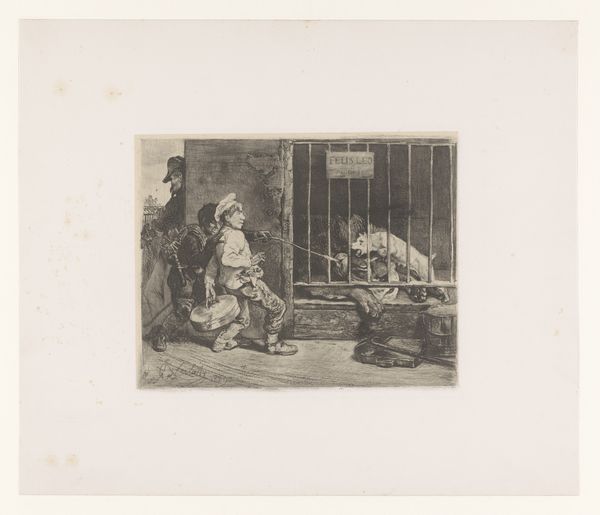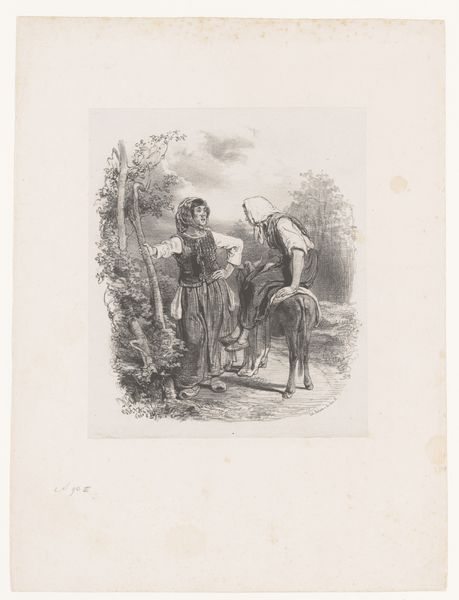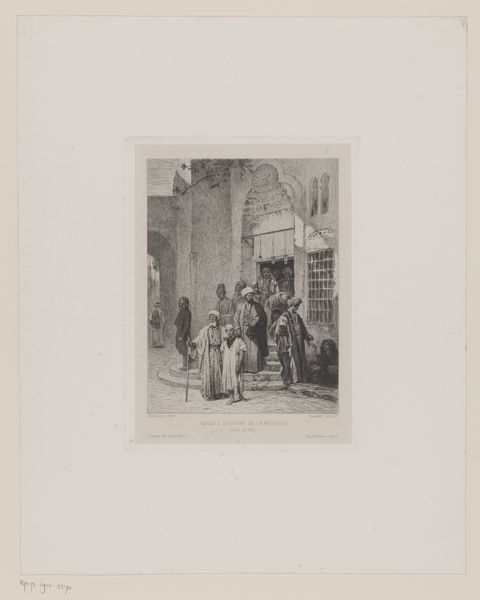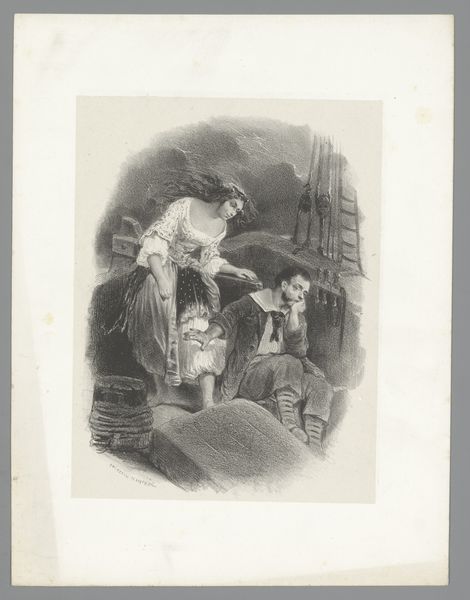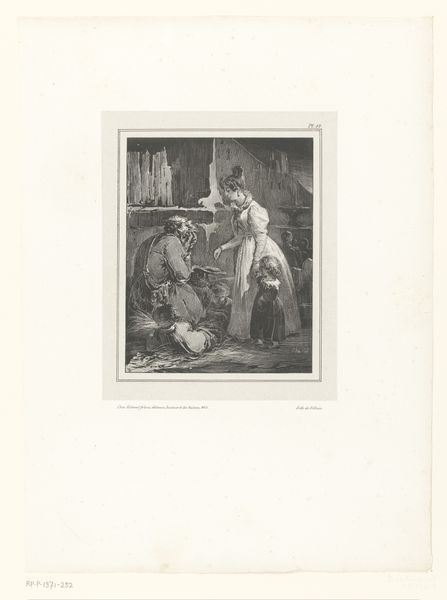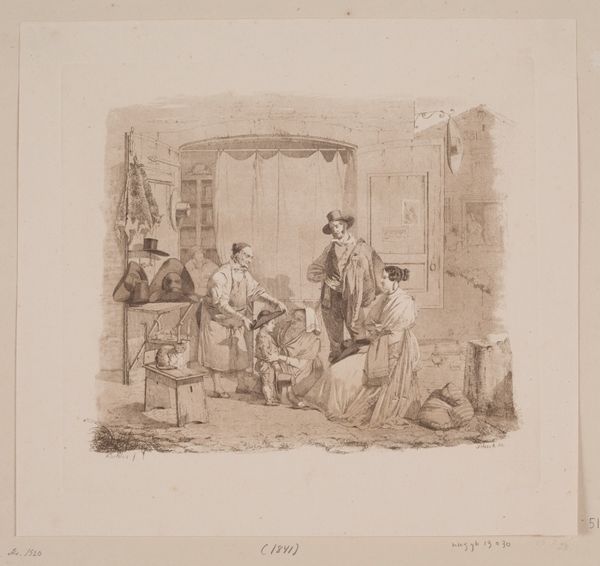
drawing, lithograph, print, engraving
#
drawing
#
lithograph
# print
#
landscape
#
figuration
#
genre-painting
#
engraving
#
realism
Dimensions: 317 mm (height) x 258 mm (width) (billedmaal)
Curator: This lithograph by Emil Ditlev Bærentzen is titled "An Italian Prison Window," and it dates from the mid-1860s. What's your immediate reaction to it? Editor: The weight of this image—literally and figuratively—strikes me first. The subjects in the foreground appear grounded, yet overshadowed by the grim reality of the figures confined in the stark background. Curator: Interesting. Formally, I'm drawn to how Bærentzen utilizes a play of light and shadow, especially in the architectural details. Notice how the textures contrast: the rough stone versus the smooth bars, creating depth. What I find most striking is how the grid of the window visually dominates the whole scene. Editor: Absolutely, and it serves as a potent symbol, doesn't it? The contrast you mention—between the freedom of the vendors in the foreground and the incarceration depicted behind—it is hard to miss the artist’s social critique, highlighting disparities. Even the innocence of children are juxtaposed against an unavoidable oppression. Curator: I agree. Note that Bærentzen worked with the traditions of genre painting and figuration. Considering the formal construction of this prison scene—the arrangement of figures, their gestures, the composition overall—do you sense a hierarchy or specific narrative being enforced by Bærentzen's hand? Editor: I do. I believe the figures in this scene, from the prisoners reaching through the bars to the vendor with a wide-brimmed hat, expose systemic issues rooted in Italian social classes and systems of justice in the mid-19th century. I see reflections of power and powerlessness that seem highly intentional on the artist's part. The faces behind bars, their bodies trapped, it humanizes those figures and asks questions about their plight. Curator: The technical proficiency here should not be discounted. I'm looking at the meticulous details, the subtle tonal gradations. In other words, Bærentzen masterfully uses his medium to render these realities and imbue the print with a remarkable, understated emotional power. Editor: It really does allow you to delve into questions of social agency and institutional control, doesn’t it? Overall, this is a rather thought-provoking artwork. Curator: Yes. By engaging with the construction of the image itself, hopefully, we’ve made it clear that, within what appears as a rather simply rendered historical setting, complex formal decisions play out.
Comments
No comments
Be the first to comment and join the conversation on the ultimate creative platform.
